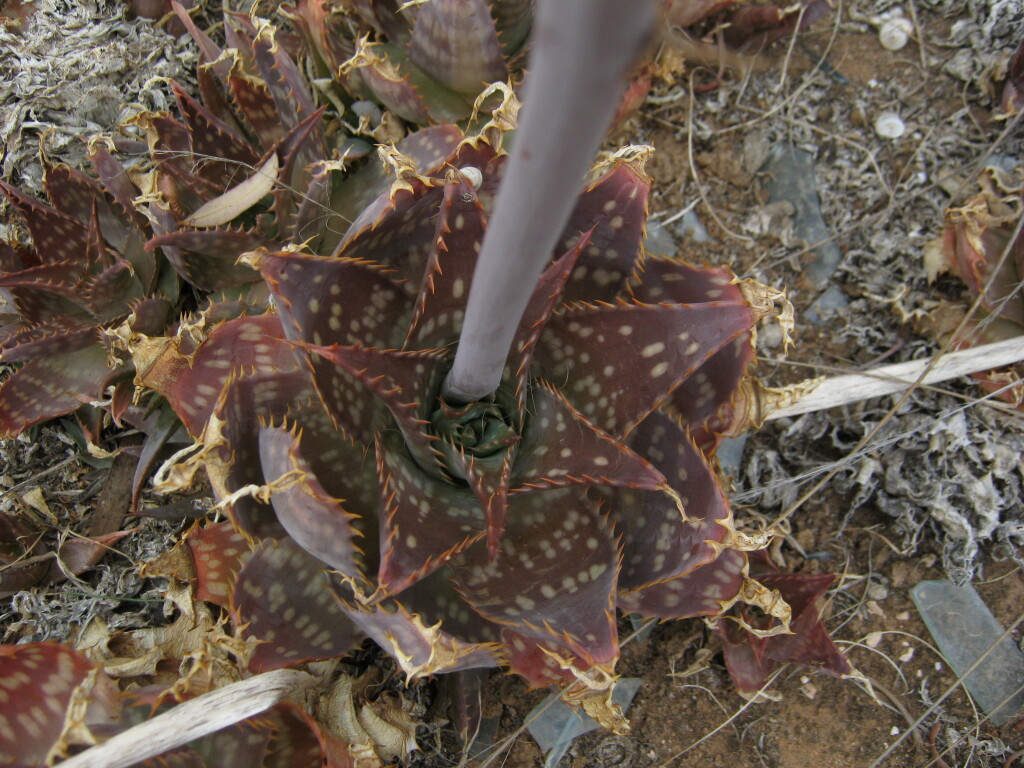Aloe maculata
All.Plants stemless, or usually short-stemmed, freely suckering, forming dense groups. Leaves 12–20 in a dense rosette, spreading to recurved, broadly lanceolate, 13–50 cm long, 5–12 cm wide; pale green with numerous white spots, fewer spots on lower surface; margins toothed. Inflorescence simple or branched, 40–150 cm tall with condensed capitate racemes, 8–10 cm long. Bracts deltoid, to 27 mm long. Flowers spreading to pendulous, cylindrical-triquetrous; perianth segments orange-pink, 35–45 mm long, united for part of their length; anthers exserted 1–5 mm; style exserted 3–5 mm.
Wim, GleP, VVP, VRiv, GipP, OtP, Gold, CVU, HSF. Native to southern Africa, widely cultivated, naturalised in Victoria.
The sap from this species was reportedly used as soap and poultice to treat cuts and abrasions.
A variable species. Known as the soap aloe, it was first called Aloe saponaria by Haworth (1804) until the name A. maculata was found to have priority.
 Spinning
Spinning




